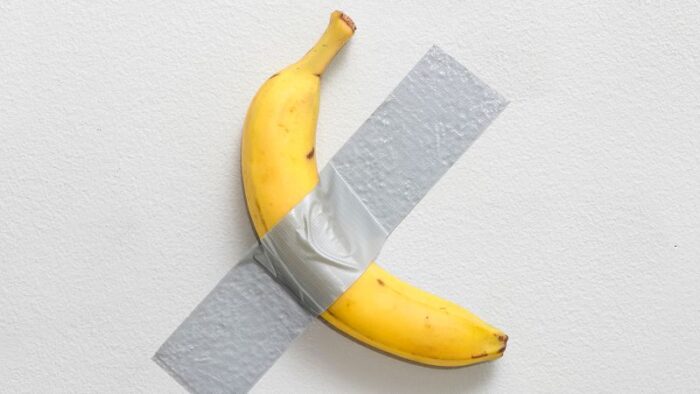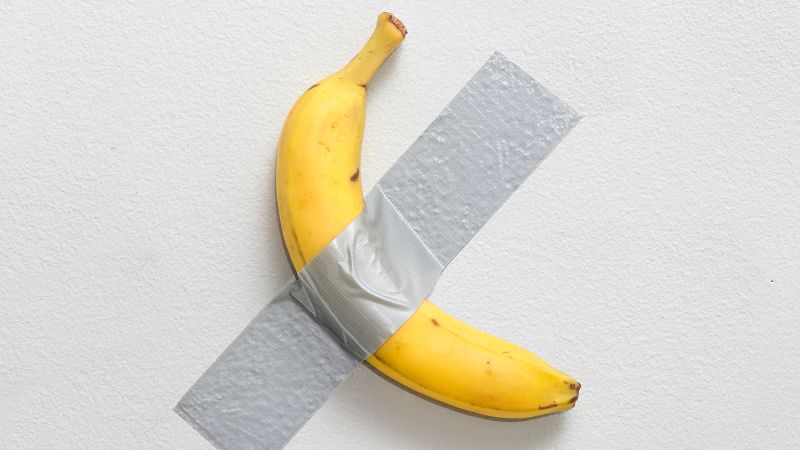
The sale of Maurizio Cattelan’s “Comedian” at Sotheby’s for a staggering $6.2 million once again underscores the artist’s mastery of provocation and his ability to collapse the boundaries between art, commerce, and cultural critique. First unveiled at Art Basel Miami Beach in 2019, this duct-taped banana gained instant notoriety, forcing audiences to question not just the absurdity of value in the art world but also the mechanics of how objects—mundane or otherwise—become imbued with symbolic power.
At the Sotheby’s auction, the performance surrounding “Comedian” seemed to rival the object itself. Two white-gloved handlers stood ceremoniously beside the banana as a crowded room buzzed with smartphones snapping pictures, capturing not just the artwork but the spectacle of its sale. The auctioneer’s quip, “Don’t let it slip away,” perfectly encapsulated the blend of humor and hype that has come to define Cattelan’s practice. Yet beneath the levity lies a sharp commentary on the arbitrariness of art-market dynamics. How does an ephemeral piece—a banana destined to decay—command such astronomical sums?
The winning bidder, Justin Sun, a figure synonymous with cryptocurrency innovation, has positioned his purchase as a bridge between memes, modernity, and art. By announcing his intention to eat the banana, Sun layers another performative gesture onto the work, underscoring its ephemeral nature while extending its conceptual narrative. Ownership here is not just about possession but about participation in the ongoing conversation that “Comedian” generates.
This sale juxtaposed starkly with another milestone in the art market: the $121.2 million sale of René Magritte’s “The Empire of Light.” Where Magritte’s surreal landscape embodies timeless mystery, Cattelan’s banana represents the fleeting absurdities of our hyper-capitalist, meme-driven era. Yet both highlight the power of art to capture and challenge the zeitgeist, albeit through vastly different means.
“Comedian” is less a physical object and more an idea—a testament to Cattelan’s status as one of contemporary art’s leading provocateurs. Its record-breaking sale is a moment to reflect not only on the evolving definitions of art but also on the peculiar alchemy of value in today’s art market. Is the banana worth $6.2 million? Or is the value in the conversation it sparks? Perhaps, as Cattelan’s work often implies, the answer is a little of both.

